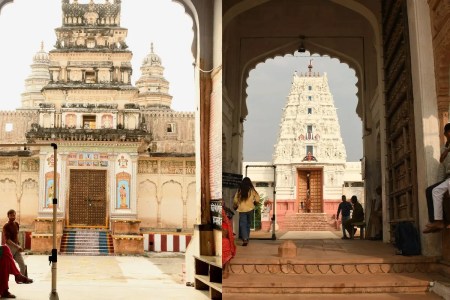
Pushkar, a town nestled at the foothills of the Aravalli hills near Ajmer city in Rajasthan, is also known as Tirthraj Pushkar. The origin of Pushkar, considered a Sat Yuga (golden age) pilgrimage site, is linked to a creation-sacrifice associated with the origin of the universe on Earth.
Local elders, citing a narrative from the 'Srishti Khand' (Creation Chapter) of the Padma Purana, explain that Lord Brahma created the Pushkar pilgrimage to bring forth creation.
A demon named Vajra used to trouble Brahma's sons. To vanquish him, Brahma unleashed a weapon shaped like a lotus flower. Its petals fell in three places, from where natural springs emerged.
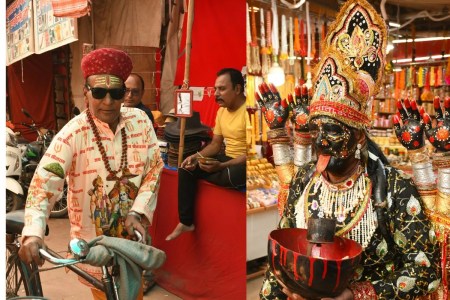
These three locations, known as Jyeshtha Pushkar, Madhya Pushkar, and Kanishka Pushkar, exist to this day. Lord Brahma performed the creation-sacrifice at the Jyeshtha Pushkar lake.
To invite his wife, Savitri, for the puja and havan (fire ritual), Brahma sent his son, Narada. As the auspicious time for the yagna was passing and Savitri could not arrive on time, Brahma transformed a celestial maiden, who was coming to the city as a Gurjar kanya (daughter of a cowherd) from Nand Gaon, into grass with mantras. He named her Gayatri and performed the yagna with her. Enraged by this, Savitri cursed Brahma.

Since then, Brahma is worshipped only in the temple in Pushkar, not in homes. Because this creation sacrifice was performed over five days, from the Ekadashi (11th day) of Kartik month to the Purnima (full moon) date, a religious Pushkar fair has been organised for hundreds of years, lasting for five days.
Although there are temples in every household in Pushkar, five are considered the main temples. The Brahma Temple houses the idols of Lord Brahma, the creator of the universe, along with Gayatri.
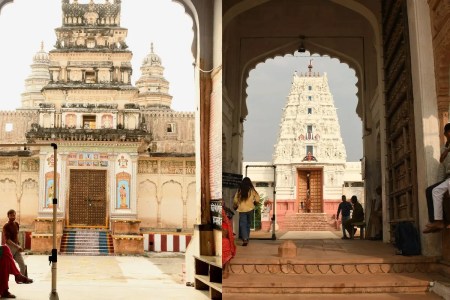
The other four major temples include those of Lord Vishnu's Varaha avatar, Lord Shri Rangnath Venugopal, Lord Shri Rama Vaikunth Nath, and Atmateshwar Mahadev, making a total of five prominent temples.
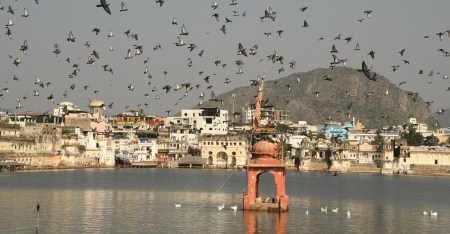
The Pushkar Lake holds the utmost significance in Pushkar. It is said that after a spring of water, resembling a cow's hoof print, emerged, Maharaja Nahar Rao Parihar of Jodhpur renovated it.
Subsequently, various princely states of Rajasthan, including Kota, Bikaner, Sikar, Jaipur, Kishangarh, Bharatpur, and Gwalior, built ghats (steps leading to the water) along the banks of this lake, enhancing its grandeur. Currently, there is no water in Madhya Pushkar, and Kanishka Pushkar is referred to as Rudra Pushkar, or Budha Pushkar.
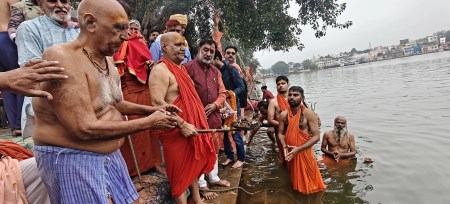
According to religious belief, bathing in Pushkar Lake grants liberation from sins. During Kartik Purnima, millions of devotees from far and wide take a dip in Pushkar Lake as an act of faith.
Every year, millions of tourists from across the country and the world visit Pushkar. The Pushkar Fair, held annually in November, further enhances the vibrancy of this town. This fair is like a festival for foreign tourists.
Reaching Pushkar is very easy. It is just 11 kilometres from Ajmer railway station, and about 150 kilometres from Jaipur. The nearest airport is Kishangarh, which is approximately 40 kilometres away.
Published on:
05 Nov 2025 11:01 am

